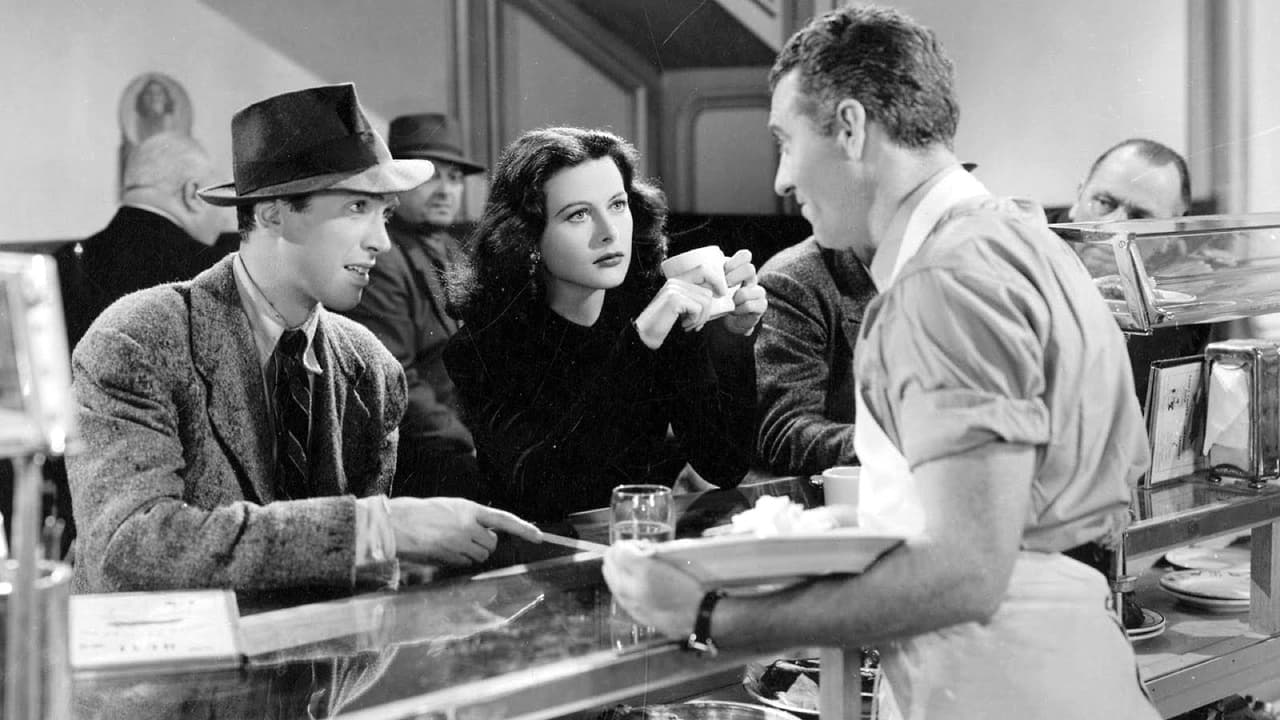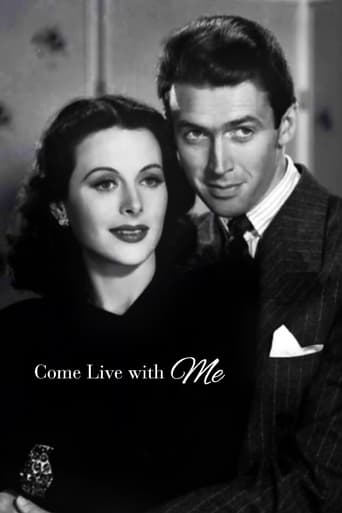

From my favorite movies..
... View MoreThe film creates a perfect balance between action and depth of basic needs, in the midst of an infertile atmosphere.
... View MoreExcellent and certainly provocative... If nothing else, the film is a real conversation starter.
... View MoreThere is, somehow, an interesting story here, as well as some good acting. There are also some good scenes
... View MoreWealthy Manhattan publisher Ian Hunter (as Barton "Bart" Kendrick) has an "open marriage" with attractive blonde wife Verree Teasdale (as Diana) and loves beautiful brunette mistress Hedy Lamarr (as Johanna "Johnny" Janns). The extra-marital bliss is threatened when Ms. Lamarr's visa expires and she is visited by an immigration officer. If more illegal aliens looked like Hedy Lamarr, the support for leniency and amnesty would grow. Because she is pretty, Lamarr is given one week to find an American husband...To avoid being deported, Lamarr offers struggling writer James Stewart (as William "Bill" Smith) a deal. She will pay him $17.80 per week to be her husband. Then, Mr. Stewart can continue writing and Lamarr can continue her affair with Mr. Hunter. Of course, things don't go according to plan... Stewart is very good. Lamarr is lovely. As the Grandma, 78-year-old Adeline de Walt Reynolds begins an impressive 20 year acting career. The most valuable player, producer/director Clarence Brown works wonders with this material.****** Come Live with Me (1/29/41) Clarence Brown ~ James Stewart, Hedy Lamarr, Ian Hunter, Adeline de Walt Reynolds
... View MoreA nice romantic comedy about a marriage of convenience between Hedy Lamarr and Jimmy Stewart where an illegal Austrian woman is subject to deportation and looks for a US citizen to marry to avoid being deported. A very good supporting cast helps to carry the movie throughout the plot. The weak points in the movie is how a woman would go to a near perfect stranger's apartment to discuss the marriage proposal and how she could have allowed herself to be "forced" to accompany her husband of convenience to his family farm for a visit. I think the film needed a bit of more development between the two characters as they were falling in love. The ending seemed a bit too rushed. The woman's original lover just driving away that quickly after she decided to stay with her husband did not seem plausible given the relationship that the former lovers had at the beginning of the movie. It was still a nice script with fine performances.
... View MoreJimmy, Hedy, goofy Ian Hunter, and "sensible" Verree Teasedale make a wonderful primary cast for this nice film. Unusually, I keep looking for more nuances each time I view it, hoping that there is more to the characters in facial nuances and body gestures. I think 5-10 minutes of additional dialogue to flesh out the characters and their relationships with each other would have helped this movie go beyond its superficiality. This is one of those films where I wonder what was cut from the script and what ended up on the cutting room floor. Clarence Brown directed a lot of fantastic films, so I'm guessing the script/story faults are partly from Virginia Van Upp (story) and Patterson McNutt (screenplay); who knows what the role producers at MGM had in trimming the movie for release.
... View MoreHedy Lamarr is a foreign born showgirl and kept mistress of publisher Ian Hunter. Immigration has gotten on her case and before Hunter can get his influence peddling machine in gear, Hedy's having some anxious moments.But as Hollywood fate must have it she meets up with aspiring writer James Stewart and they agree to a marriage of convenience to keep her in the country. And to seal the bargain Lamarr actually agrees to pay Stewart a "salary" so that romance won't creep into things.Well wouldn't you know it, Stewart writes about the arrangement in a prospective new novel that he takes to publisher Hunter. The rest of this film is rather obvious.What I find curious about this film is that the plot I described could easily be the basis for some sophisticated screwball comedy or a tender romance, given the writers, director, and players. But the combination in Come Live With Me opted for the tender romance. Stewart and Lamarr are just fine in their roles as is Hunter. MGM and director Clarence Brown gave them a nice supporting cast. Please note the performances of Verree Teasdale as Hunter's wife, Adeline DeWalt Reynolds as Stewart's grandmother and the whimsical Donald Meek, just being Donald Meek in a Donald Meek part.The title Come Live With Me is the first line of a Christopher Marlowe sonnet, a romantic piece that fits the tone of the whole film. But it does end on a Shakespearean note.
... View More